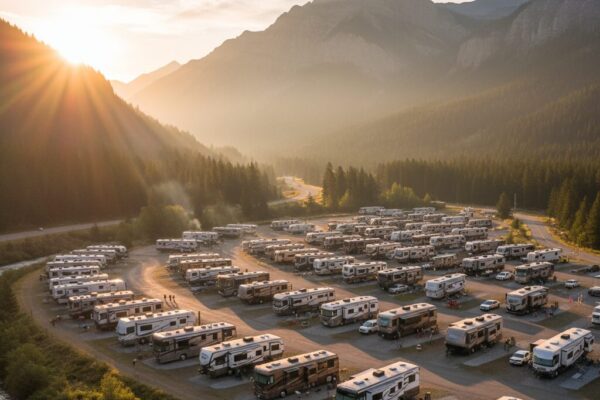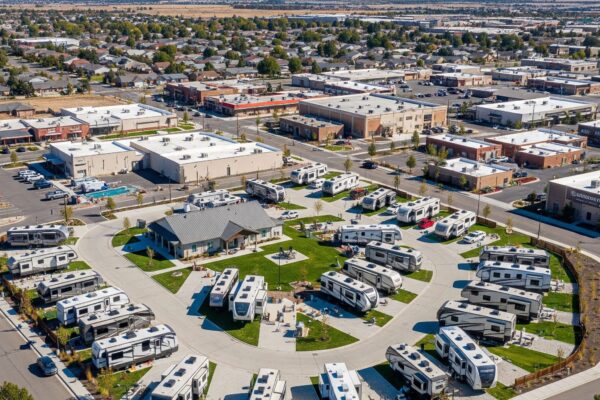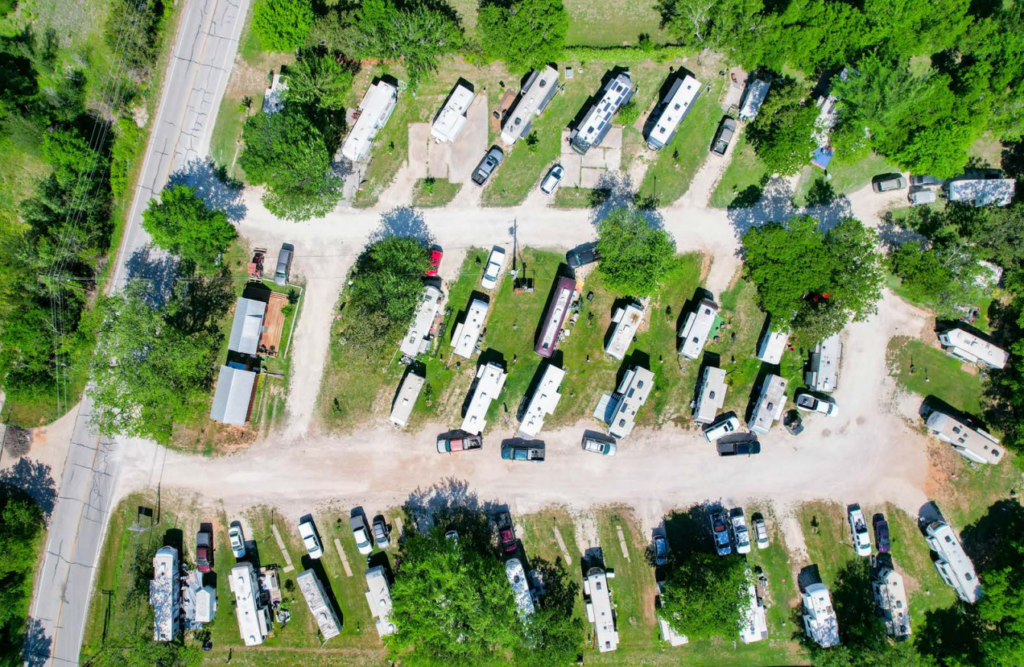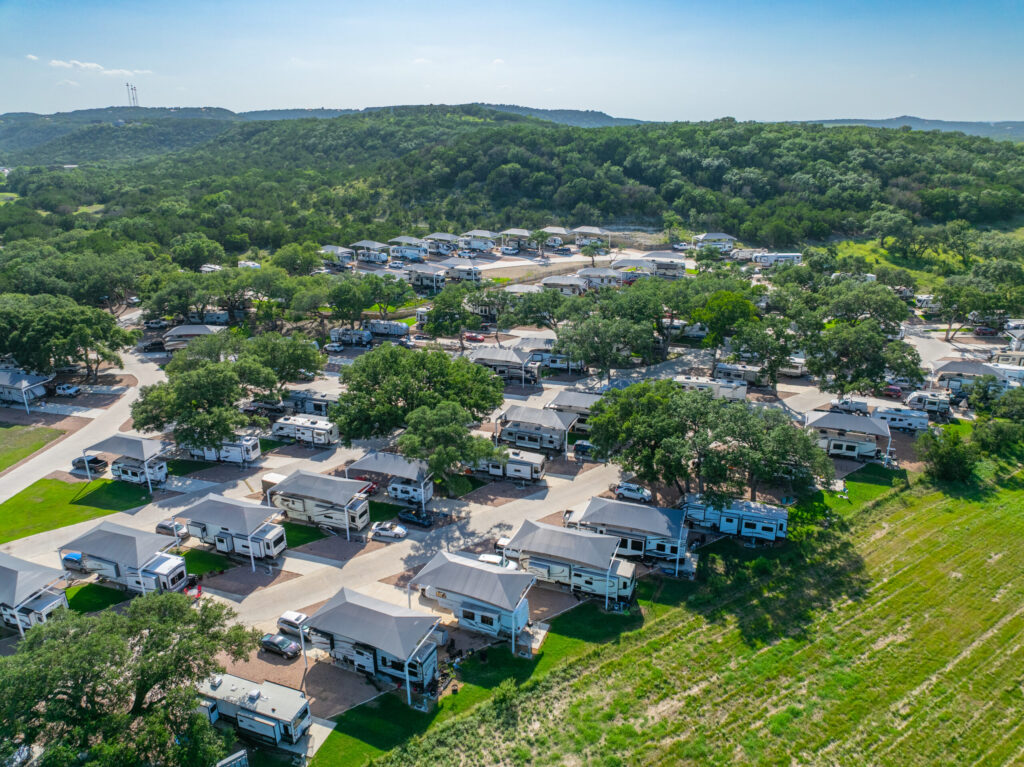December 03, 2025
The campground and RV park sector is still growing—just not at the frenzy we saw in the early 2020s. But behind the headline slowdown, there’s a clear, investable trend: high-conviction operators are still building, expanding, and upgrading parks across North America…
November 18, 2025
Housing is getting more expensive. Travel habits are changing. And quietly, in the middle of those two forces, one corner of commercial real estate keeps gaining momentum: RV parks and mobile home parks. For owners…
November 11, 2025
If you’re an investor looking for steady cash flow without the constant repairs, evictions, or tenant drama of multifamily ownership, self-storage—and its close cousins, boat and RV storage—deserve your attention.
October 9, 2025
Across the U.S., banks are bracing for mounting losses as a wave of commercial real estate (CRE) loan modifications surges through the market. The Federal Reserve Bank of St. Louis reports that the value of modified CRE loans has jumped 66% year-over-year…
October 1, 2025
Taylor County has officially approved one of the largest RV parks ever built in the United States. The Elmdale RV Park, slated for development off Elmdale Road North and Mesquite Lane, will feature 2,313 RV sites across roughly 148 acres. With final infrastructure plans now approved by…
July 18, 2025
As we move deeper into the second half of the year, significant shifts in federal policy are creating ripple effects across the investment landscape — particularly for those in the RV and mobile home park space. Between evolving tariff policies and the fast-tracked passage of a sweeping new tax bill, investors are being forced to navigate through a mix of opportunity and uncertainty.
July 17, 2025
On July 4th, a new tax law was signed into effect—bringing renewed clarity and expanded benefits to real estate investors across the country. For RV and mobile home park owners and operators, this legislation isn’t just a refresh of prior rules—it represents a powerful opportunity to improve cash flow, enhance first-year returns, and better structure long-term investment strategies.
July 09, 2025
As RV park and campground owners face an increasingly complex operating environment—from rising costs and tightening regulations to changes in guest expectations and extreme weather events—insurance has emerged as one of the most volatile and often misunderstood components of running a park.
July 03, 2025
In early July 2025, the U.S. Senate passed a sweeping tax and spending bill—informally known as the One Big Beautiful Bill (OBBB)—that’s poised to significantly impact the real estate landscape, including mobile home and RV park owners, buyers, and sellers.
July 02, 2025
The Federal Reserve just held rates steady again—and if you’re a park owner, this decision (and the reasoning behind it) offers more than just financial headlines. It provides a useful lens into how to think about the second half of 2025, especially if you’re considering a sale, purchase, refinance, or expansion.
June 24, 2025
In today’s market, having a clean park with great amenities is no longer enough to drive occupancy and revenue. Discoverability—and the guest experience before they ever step foot on your property—is more important than ever.
June 17, 2025
As operational costs rise and environmental awareness grows, RV and mobile home park owners are increasingly looking toward solar energy as a smart, sustainable, and financially savvy investment. Solar panels not only reduce electricity bills but also increase a property’s appeal to eco-conscious guests and investors. This article outlines the key benefits, strategies, incentives, and real-world examples to help you determine whether solar is the right move for your park.
June 13, 2025
We met this company in-person at the Texas Association of Campground Owners (TACO) Conference and were impressed with their product’s potential to help park owners lower utility costs and increase NOI.
At this year’s TACO Conference, our team had the opportunity to meet with the representatives from Peak Energy Technology, a company offering a practical and surprisingly affordable way to lower your park’s electric bills.
June 12, 2025
In working with hundreds of park owners across the country, one thing has become clear: the most successful operators are intentional. They know their market, understand their guest, and have a clear vision for what they want from their property…
June 11, 2025
Insights from the Texas Association of Campground Owners conference. The event was well-attended by a wide range of RV park and campground stakeholders…
June 10, 2025
If you’ve seen reports saying the average cap rate is “6%” and thought, “That doesn’t line up with what I’m seeing,” you’re not wrong.
Cap rates are one of the most talked-about metrics in commercial real estate—but when applied too broadly, they can create more confusion than clarity. This is especially true in niche sectors like RV and mobile home parks, where asset quality, location, and demand can vary dramatically.
June 09, 2025
On May 16, 2025, Moody’s lowered the U.S. sovereign credit rating from Aaa to Aa1, joining S&P (downgraded in 2011) and Fitch (downgraded in 2023) in removing the U.S. from the AAA club (bluelake-capital.com, pgpf.org). Moody’s cited…
June 03, 2025
If you own an RV or mobile home park in Texas, you may be unknowingly paying sales tax on electricity—when you don’t have to.
Texas law provides a sales tax exemption on electricity for properties where the majority of electricity is used for long-term residential purposes. This exemption can reduce your monthly utility expenses and even allow you to recoup years of overpaid taxes. Here’s how it works—and how to take advantage of it.
May 28, 2025
Tiny homes, typically 100–400 sq. ft., offer compact living with efficiency and affordability. Whether on wheels or foundations, tiny home communities feature shared spaces and amenities for a sustainable lifestyle.
May 27, 2025
As we move through the year, one of the biggest questions weighing on the minds of real estate investors—especially those in outdoor hospitality—is: Where are interest rates heading?
Whether you own an RV park, a mobile home community, or a glamping resort, rising or falling rates directly impact what your property is worth, how easily a buyer can finance it, and how attractive it is to the investment market.
May 26, 2025
When it comes to purchasing an RV or mobile home park, proper due diligence is key to ensuring that the investment is sound and will meet your long-term financial goals. Both the physical condition of the park and its financial health should be carefully scrutinized before making an offer. Below is a guide to help prospective buyers navigate the due diligence process.
May 26, 2025
The RV park industry has transformed dramatically over the last decade, largely due to the internet’s role in changing how consumers research, book, and experience their stays. As an RV park broker, I work with park owners across Texas, helping them navigate these changes while increasing the value of their properties. One of the most common questions I get from park owners is, “Why is my occupancy not as strong as it was just a few years ago?”






















